Within the sport of mountain biking, the durability of a bike’s wheels are likely the most crucial component of the entire bike. So this means you need to ensure you have quality wheels, especially if you are thinking about starting Enduro or Cross-country cycling. Zipp wheels are perhaps one of the top 5 companies in terms of crafting superb mountain biking wheels. No matter the MTB type, Zipp makes them, but what makes Zipp wheels great?
Zipp’s current wheels are designed with their total system efficiency approach and feature a hookless rim-tire interface. The term hookless refers to a tire bed shape at the outer diameter of the rim, and these dynamics collide to create a powerful and smooth riding experience.
Are you currently interested in possibly trying out a pair of Zipp wheels? Perhaps you are curious about the company but are also wondering if these tires are really the right fit for you? Whatever your interests or concerns may be, this article is for you. In this comprehensive guide, we are going to take a deep dive into Zipp wheels by taking a look at the company, it’s wheel manufacturing process, and reviewing a range of their most popular wheels.
Zipp 404 Carbon Wheels
The Zipp 404 with carbon wheels is undoubtedly the brand’s wheelset star and highly appreciated all-rounder. It represents a great balance between aerodynamics, overall low weight, and excellent ride quality. When it comes to triathletes and serious cyclists, the Zipp 404 is arguably a gold standard.
Zipp has been around for a while.They released their first high-performance wheels in 1988, just as triathlon was getting off the ground and time-trial racing was gaining in popularity. Throughout the 1990s, they continued to crank out new designs and models, and in 1999 the first 404s hit the scene. Ever since, Zipp 404s have been one of the go-to wheelsets for serious triathletes and time-trialers.
One of the best features of this wheelset is the use of Zipp’s Firecrest rim profile. The 404 rim has a good depth, but it also has a very wide profile which significantly improves the straight-line aerodynamics (which increases better airflow).
One of the major design refinements for this set is the introduction of Zipp’s enhanced rear hub. The big change with this hub is that they’ve switched from radially lacing the drive side to their special lacing pattern. The difference that this makes is an improvement in the rotational stiffness of the wheel.
The width is usually thick, the sides are as flat as planks, and they feature blunt noses. The set is focused on cutting through the wind and speed ahead, which makes it a serious competition to those deep, shallow aero models. Coupled with a durable and stiff tire, you are going to get a setup that is fast, responsive, and lets you feel the road — but also handle the occasional pothole without a catastrophe.
Zipp 404 Carbon Wheelset Performance
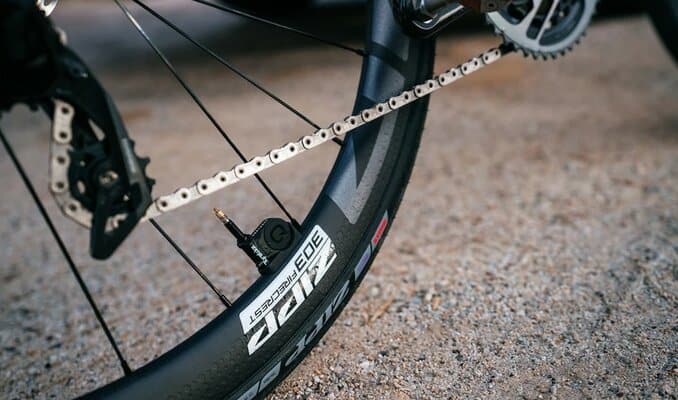
The wider rim profile absorbs impacts a little bit better, makes the road feel smoother, and gives the tire a larger contact patch for better traction. It actually reduces the rolling resistance of the tire, as well. It also uses its proprietary heat resistant resin and the carbon layup which reduces breaking temperatures, so you’re gonna have a much more consistent and better quality braking surface – which is especially important in this type of clincher.
Thanks to the special lacing pattern I mentioned above, there’s a slight increase in lateral stiffness. Moreover, you’ll notice that when you apply power down to the pedals it’s going to transfer to the rear wheel very well, creating a much more responsive rod.
The bearing placement in the rear hub has been changed a little bit (compared to earlier models) to a wider stance and a larger bearing. That improves the overall stiffness of the hub.
Even if it might seem pricey if you’re on a tight budget, Zipp’s 404 Wheelset has proven to be great value over time. The flawless combination of rigidity, strength, and aerodynamic performance make these carbon wheels ideal to be used in most weather and road conditions.
They’re amazing for time trials, and you can even use them in hill climbs if you’re not fighting for fractions of seconds. While it may require time to get used to them, these wheels can get super fast.
Zipp 404 wheelset’s clincher shape is perfect if you’re looking for speedy rides. The wheels are big and fast – faster than slimmer counterparts. They’ll offer you stability against crosswinds – they’ll even flawlessly fight against the more violent ones. The top-notch braking performance also helps you not get knocked out of the mean wind.
Not to mention that their temperature capability makes them able to be taken up to the mountains or high altitudes with peace of mind.
Zipp 404 is a very common and extremely popular wheelset to find in online and offline stores, so the prices are pretty competitive for the fabulous features and quality it offers. When I last searched, all of the full wheelset combos were feasible and affordable, putting them in rare air from a market standpoint.
These are probably not the wheels you put on your entry-level tri bike or your aluminum all-road bike. In terms of retail, always consider consulting your local bike shop. They can give you great advice, and we love supporting them. The Zipp 404 is, without question, a classic aerodynamic wheelset and one of the top choices when you’re looking for aerodynamic gains.
I recommend it if you have the budget. If you’re dreaming of impeccable design and you want to turn your bike into a landspeeder, this is a great option to consider. Even if it falls into the pricey category, its quality and features are worth it if you’re serious about a solid, trustworthy aerodynamic upgrade. It’s certainly the kind of wheelset that’s ideal for any type of flat terrain and crosswind.
Zipp Aluminum Wheels vs. Carbon Wheels
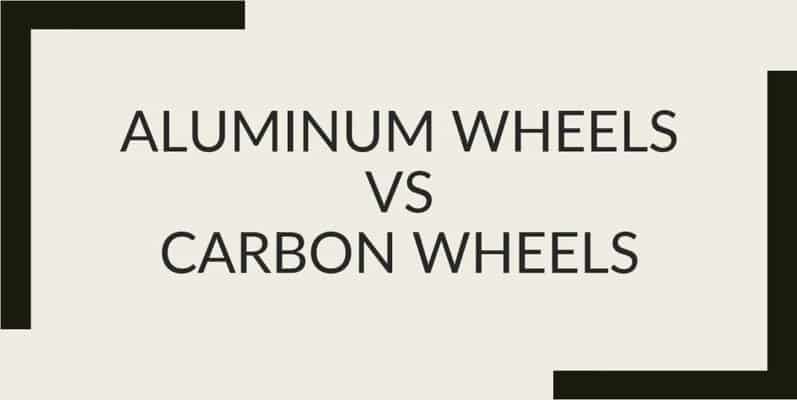
Are carbon wheels worth it? To a lot of people, yes. A common misconception is that the difference in price is all about weight. If you look at it from a weight savings perspective alone, you’re spending per gram of weight difference. Don’t know about you, but that sounds like the price of some illicit substance you’d buy on the street in a seedy neighborhood.
That’s why you have to factor in the whole equation in order to justify dropping some serious cash on carbon circles. Sure, they generally weigh less than their alloy counterparts. Lighter wheels accelerate faster, go uphill faster, slow down faster under braking…see the theme? Faster. Is it all about weight and speed? Not really. There’s also a big change in ride feel.
Carbon rims are generally stiffer. Stiffer wheels feel more energetic, give you more support in corners and tend to make your ride feel more lively. Some wheels can be too stiff though. They feel chattery and rough in the bumpy bits of trail. There’s a fine line between lively, energetic wheels and bone-shaking, tooth-rattling wheels. That’s why some riders would actually rather ride alloy (aluminum) wheels even if price wasn’t a factor.
Alloy wheels tend to flex more, or in bike industry terms, they’re “more compliant.” The added compliance can offer more traction, a smoother ride and a more damped feel. They usually weigh a bit more, but that difference in weight is rather minimal. In some cases alloy wheels can be lighter than carbon.
Another advantage to alloy wheels is they’re cheap. Most alloy rims will run you about 100-130 bucks — can’t complain about that. While much of the marketing dollars are spent on promoting carbon fiber, the bread-and-butter of the wheel industry is (still) aluminum. Though price has come down over time, most carbon can’t match aluminum prices, save a few notable exceptions like consumer-direct FLO Cycling.
There is an interesting inflection point that occurs around $1,000: Here you find some great high-end alloy wheels, in addition to the beginning of the carbon fiber market.
Before disc brakes came to road and triathlon bikes, the choice between expensive aluminum and inexpensive carbon often came down to braking performance. Want good braking? Go aluminum. Willing to give that up for the cool-factor of carbon and potential aero gains? Go carbon. Now that disc brakes are becoming more common, the argument to go alloy has become more slippery.
Adding rim depth improves rim stiffness and also reduces the amount of spoke length that’s exposed – aiding in aerodynamic performance. Adding rim width helps to increase tire volume, allowing for lower air pressure and improved comfort – and arguably better handling. The rub for aluminum rims is that having a rim that’s both deep and makes for something heavy.
Because of this, it’s very rare to find any aluminum rims with a depth greater than 30mm, or an outer width of greater than 25mm. Also, I’m not aware of any aluminum rims that have both a 30mm depth as well as a 25mm width – as of now it’s either-or. Perhaps the best outlier in this respect was the now-discontinued American Classic 420. With super-thin construction, it managed to hit an advertised weight of 420 grams per rim with a 34mm depth and 22mm width.
While I never used this particular rim, I did test its slightly shallower cousin, the 29.5mm-deep Argent once a few years ago.They were indeed very light given the depth, but the rims were just too thin for my taste. During my test, I experienced a brake ‘tick’ that seemed to be due to either a bad rim joint, or a rim that had become slightly bent during tire installation (due to a VERY tight interface with the tire).
The best example of an overall aluminum performance package is the now-discontinued 101 from Zipp. This rim used the Toroidal patent that was co-held by Head and Zipp, implementing a smart rim shape with angled braking surfaces. It had a depth of 30mm, a brake track width of 22.8mm, and a maximum width of 24.5mm.
When used with a 23mm tire, the rim was wider than the tire (using the Rule of 105 for legitimate aero performance when combined with the curved rim sidewalls). Unfortunately, the rim was very expensive to machine, with no flat surfaces (I know – I was working for Zipp at the time it debuted). With a $1,300 asking price per pair, it just wasn’t a feasible sale with competitors’ carbon rims coming down to match its price.
It performed better than many of these carbon competitors – especially when you consider braking performance – but it’s tough to battle the perception that carbon is always better.
Zipp Tires
Wheel manufacturers are now understanding that despite a stiff wheel giving sharp cornering and acceleration, building compliance into a wheel allows better grip and control as the wheel can deform over rough terrain.
No manufacturer takes the concept of wheel compliance further than Zipp which has entered the mountain bike market for the first time with its 3Zero Moto wheelset. Inspired by the single wall rim designs in motocross, the 3Zero features a 30mm internal width and can be purchased as single wheels or as a wheelset, in both cases built around Zipp’s ZM1 hubs with standard splined SRAM/Shimano or SRAM XD freehubs.
Wheelsets come as boost only in both 27.5- or 29-inch formats. If you purchase the complete wheelset Zipp includes Tyrewiz pressure gauges to make sure you’re always at the preferred PSI for optimal grip.
Tubular wheels are most often used for competitive road and cyclocross racing.
The casing and tread of tubular tires are sewn or molded around an inner tube. The tire is then glued to a tubular rim, which lacks the rim walls needed to hold the bead of a clincher tire. Some racers prefer tubular wheels and tires because they are lighter, more supple, and can have lower rolling resistance.
Tubulars are very popular among competitive cyclocross racers because they allow much lower tire pressures for maximum comfort and traction, while also being more resistant to pinch flats than clinchers.
For nearly everyone, tubulars are not ideal for training or recreational riding because they are hard to repair if you puncture. Gluing tires in your workshop isn’t too difficult, but it can be an intimidating, messy task for novice mechanics. Many riders save their tubulars for race day and ride a set of clincher or tubeless wheels day-to-day.
Take a look at this video to see why tubulars can be time-consuming choices.
What About Tubeless Options?
Tubeless wheels are standard equipment on most modern mountain bikes and gravel bikes. Tubeless wheels are also gaining popularity in road cycling and cyclocross as an alternative to clinchers or tubulars.
Tubeless tires are similar to clinchers but rely on an airtight seal between the bead and rim and tubeless sealant inside the tire to hold pressure. Riders can often run less air pressure in tubeless setups compared to clincher setups, improving traction and comfort. Tubeless sealant helps fix small punctures by filling holes if you strike a sharp rock or ride through thorns.
This makes tubeless ideal for off-road riding where debris and aggressive riding can cause flats. In an emergency situation, a tubeless tire can also be used with a standard inner tube.
Tubeless wheels and tire systems require a little technical knowledge to install and maintain, but it’s doable for most mechanics.
Zipp Design
Zipp wheels come in a wide range of different design types. Carbon fiber is an exceptionally light, stiff, and strong material. A carbon wheel is often much lighter and stiffer than a comparable aluminum wheel. This makes carbon a popular option for high-performance wheels.
Many competitive riders and racers choose carbon because the weight and stiffness improve a bike’s acceleration and handling. Carbon wheels can also be formed into more high-tech aerodynamic shapes for riders seeking an advantage in road, triathlon, and time trial racing.
The most notable downside of carbon wheels is cost. Carbon wheels are often much more expensive than comparable aluminum wheels.
Premium aluminum wheels and entry-level carbon wheels are generally comparable in price.
Some riders also prefer aluminum rims because they have a reputation for being more durable and robust. A strong, direct impact can cause a carbon wheel to crack, where an aluminum wheel may just be dented. In the event that wheels get damaged beyond repair, aluminum wheels are cheaper to replace.
Racers might train and ride on cheaper aluminum wheels, and save their carbon wheelset for major events. Weight, stiffness, rim width, rim depth, and durability are other aspects that should be considered along with material and will be explored in greater detail below.
Are Zipp Wheels Good?
It’s not so much a question on if Zipp wheels are good, but rather, just how good a specific model and design are in terms of what they will be used for. Zipp created the first tri-spoke wheel in 1989 to give riders an aerodynamic option for front wheels. Three years later, it introduced the 2001 aero beam frameset which used a massive wing-shaped downtube, no seat tube, and a flexible beam for the top tube and saddle.
Through the 1990s, these products gained a considerable foothold in the growing triathlon scene and earned Zipp a reputation as one of the most technologically progressive brands in cycling.
Even with the great success of the tri-spoke, Zipp’s engineers weren’t satisfied. In the wind tunnel, they saw that performance could be improved with a deep-section wheel with spokes. Compared to a tri-spoke, deep-section wheels are comparatively fast but less affected by crosswinds. They also pass through the air more cleanly, leaving fewer wakes and turbulent air.
In 1992, the original 440 deep-section carbon wheelset went to production. Zipp’s deep-section wheels were the first of their kind and had a huge influence on aero wheel design for the years to come.
Zipp also experimented with carbon mountain bike cranks and wheels nearly a decade before they became popular. But when Zipp (the cycling company) split from Compositech (Sargent’s motorsports business) in 1998, the focus shifted to road cycling. Leigh Sargent’s original employee, Andy Ording, bought the cycling side of the business and refocused it on road development, bringing a host of new aero technology to carbon road wheels.
In 2007, component manufacturer SRAM purchased Zipp, and three years later, Zipp made history when Fabian Cancellara became the first rider to win Paris-Roubaix (and Tour of Flanders) on carbon wheels riding a prototype 303 wheelset. Victory in the most rugged WorldTour race proved that carbon wheels were the future of cycling.
How Much Faster Are Zipp Wheels?
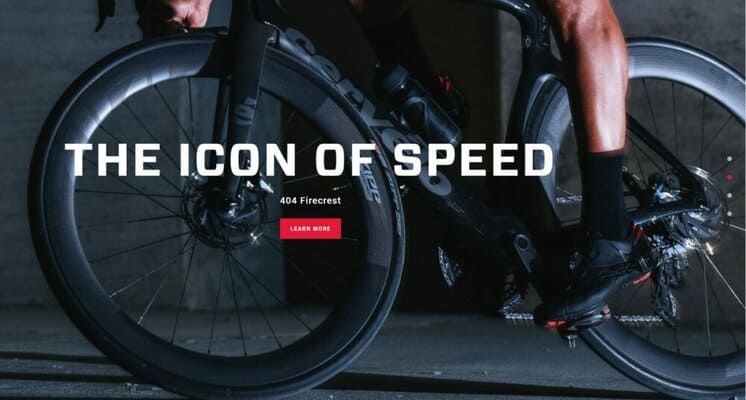
When it comes to aerodynamics, Zipp wheels have long reigned supreme. Pioneers of carbon rim technology, Zipp’s products have a storied history of delivering the world’s fastest athletes to the top step of the podium.
From the World Tour to the cyclocross World Cup, from Iron Man to the Enduro World Series, from backcountry gravel epics to the local crit circuit— wherever bike racing happens, you’re sure to find riders relying on Zipp wheels to go their fastest.
Is Zipp Owned By SRAM?
SRAM and Zipp announced in 2007 that they have signed a Non-Binding Letter of Intent for SRAM to acquire Zipp. According to SRAM, the acquisition was expected to be completed within 60 days and both companies have lived in tandem since.
Stan Day, CEO of SRAM said: “Zipp is a great company and respected brand, with a strong management team, advanced technology and superb manufacturing capability. We look forward to bringing both successful companies together and synergistically delivering a growing strategic range of products to our customers.”
Andy Ording, President of Zipp further said: “Zipp has remained focused on market defining technology development in advanced composites and aerodynamics. After nearly two decades of carbon product manufacturing the SRAM opportunity provides additional horsepower and improved global market leverage. SRAM has a fine reputation for acquisitions and culture integration, affording us the opportunity to broaden our foundation on which the Zipp team can build for the long term.”
So, yes, SRAM owns Zipp and the partnership has been quite productive for 15 years.
Are Zipp Wheels Handmade?
Zipp Wheels are tested in a lab that sounds of heavy machinery and smells of burnt rubber. Inside, they are spun at high RPMs for hours on end, inflated to over 360psi to test for blow out, torqued, smashed and yes, even struck at high speeds in a UCI-styled curb test machine.
After rigorous testing, new models came forth, like Firestrike, which evolved from the Firecrest line.
As someone who has never had the desire to own carbon wheels on their road bike apart from my testing of them once, I am still turned into what Zipp has been doing over the years because I know how hard it is to keep on top of technology in an industry that simply can’t make up its mind on what the hell the current “standard” will be.
Perhaps that’s why in their newest release of a disc, thru-axle wheelset, there are still a few things left to be desired.
Do Zipp Wheels Have Serial Numbers?

Yes, and you will need this number for service and repair or exchange. Make sure to follow the following guidelines:
- First and foremost, shop for wheels at an authorized Zipp dealer. This is the only way to ensure you are purchasing the quality, service and warranty that come with Zipp Speed Weaponry.
- Current model Zipp wheels have two decal options, Beyond Black and Classic White. Zipp Firecrest wheels have black spokes and hubs.
- Zipp Firecrest rims are embossed with Zipp’s oval “Z” logo.
- The carbon on the inner diameter of most all Zipp rims is embossed with “Handmade in Speedway, Indiana” or “Handmade in Indianapolis, Indiana, USA.”
- Model year 2013 Zipp rims have the serial number laser etched on the spoke bed.
Zipp Wheels Weight Limit
Wheels are the best place on a bike to shed grams because they are rotating weight. Increased rotating weight increases inertia. Wheel inertia matters in cycling because the rider has to pedal to overcome it — heavier wheels require more energy to accelerate.
Upgrading to lighter wheels makes a bike feel snappier and easier to get up to speed. This is beneficial for climbing and accelerating from a stop or out of slow corners. Most riders can immediately feel a positive difference after switching to lighter wheels and it’s the thing most riders pay attention to when comparing high-end wheels.
As stated before, carbon wheels are generally lighter than comparable aluminum wheels. This makes carbon the best option for riders who are looking for a competitive advantage to improve their climbing or acceleration. A good set of carbon wheels could shave seconds off a long climbing segment, meaning new PRs might be within reach.
Often, the manufacturer’s claimed weight for wheels and wheelsets can differ from the actual weight on a scale.It’s easy to use the compare tool on various retail websites to see which wheels are lightest. Stiffer wheels help a bike feel more responsive to rider inputs like pedaling and steering.
Upgrading to stiffer wheels makes a bike accelerate more immediately, steer more responsively, and hold lines through corners and bumps more precisely. Some racers prefer stiffer wheels because this feeling of precision can improve confidence and control in high-speed situations.
Zipp Grips
If you buy expensive wheels, you want them to last. Durability concerns are a potential downside of carbon wheels. This is more of a concern for mountain bikers who are hard on equipment and ride gnarly or technical trails. In extreme cases, rim strikes can generate enough force to crack a carbon rim. Most carbon failures occur due to hard rim strikes or debris hitting the wheel.
Damage from rim strikes and debris occurs in cyclocross and gravel riding too, but it’s slightly less common due to the nature of the terrain. It’s even rarer to damage carbon wheels while road cycling.
Riders who are most concerned with durability often prefer aluminum wheels. Impacts may dent aluminum rims, but in many cases, they are still usable, despite the damage. If an aluminum wheel is totaled, it is also cheaper to replace.
In recent years, carbon technology and construction have improved. Modern carbon wheels are more durable than ever. Many amateurs and recreational riders will have no issues with carbon wheel durability.
The advent of tire inserts has also made carbon wheels a more viable option. Foam tire inserts protect wheels from damage due to rim strikes and can be a valuable addition to a carbon wheelset.
Plus, a number of wheel brands, such as Santa Cruz Reserve, are offering no-questions-asked lifetime warranties on new carbon wheels.
When in doubt, only purchase wheels that you can afford to replace. Plenty of mountain bikers treat their wheels as disposable commodities, making aluminum a more financially realistic choice.
Finally, if your bike has rim brakes, carbon wheels may be less appealing because wet and dirty conditions can reduce stopping power. You’ll also wear through expensive brake pads more quickly. If you must ride them, consider saving carbon rims for race days and special events.
When shopping for wheels, people often fixate on picking the right rim, making the hubs a secondary concern.
High-end hubs often weigh less and use higher quality bearings. However, it’s hard to say if the average road rider notices the difference in rolling resistance or weight when comparing a mid-level hub to a high-end hub.
Hub engagement, on the other hand, is very noticeable and can be an important factor for mountain bikers. Engagement is essentially how many “clicks” you hear when the rear wheel is freewheeling. Your bike’s cassette is mounted to the hub on a freehub, which houses a ratcheting mechanism that allows the hub and wheel to continue spinning freely when you’re not pedaling.
Hub manufacturers typically employ a set of spring-loaded pawls for hub engagement. These paws are little arms that pass over ridges that are machined inside the hub. As the hub spins forward the ridges pass smoothly over the backside of the pawls. These are the clicks you hear when freewheeling. When you pedal, the pawls spring up and bite the ridges to transfer your pedaling power.
Some hubs have more clicks than others. This is referred to as “points of engagement” (POE). This can also be referred to as degrees of engagement, which describes how far you have to rotate your crank arms in degrees (through a full revolution of 360 degrees) before the pawls engage and drive the hub forward.
For off-road riders, faster engagement makes a difference on slow and technical features that require balance and quick, short pedal strokes. The immediate engagement can be the difference between cleaning a section and getting off to walk. Quick engagement can help in racing. You can sneak in pedal strokes while riding through choppy sections or get on the power just a split-second sooner when exiting a corner.
Zipp Rims
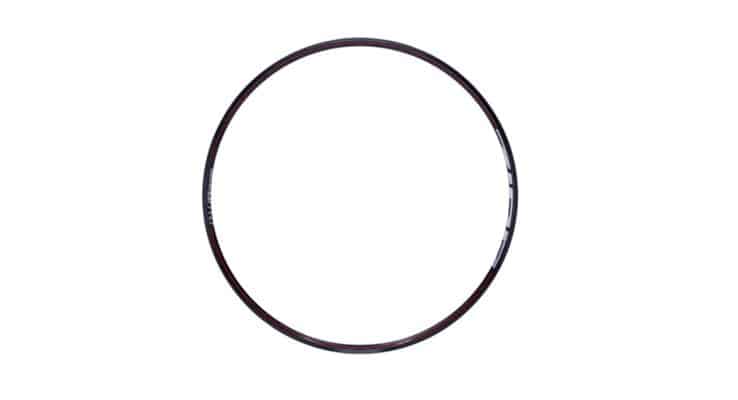
The Zipp rim is flat or, more accurately, it’s single-wall while nearly all high-end bicycle rims use some sort of double-wall design. Many carbon rims form an almost triangular or arched shape between the spoke bed and rim bead. It’s pretty common knowledge that triangles, spheres, and squares are dope as hell for creating structural rigidity.
A flat piece of paper is floppy, but if you fold it a couple times to make a triangular shape, that same piece of material all of a sudden becomes much more rigid. As such, the shape of a box-section double-wall rim is far more robust than a single-wall setup. That’s why back in the day, rims took the leap from super flexy single-wall designs to aluminum double-wall deals in the first place.
But carbon is a different beast. It’s naturally very rigid so it doesn’t necessarily require the same type of structural design we use for aluminum hoops. There are some compelling differences I noticed between these and aluminum rims. First and foremost is traction. We talked about that already. Then, there’s the general ride feel. They’re livelier than aluminum hoops, while being at least as effective at absorbing and dissipating trail chatter.
It’s hard to really describe exactly, but basically they have a bit more pop in them. They spring out of corners with extra oomph, and it’s a sensation I prefer. After getting used to it, aluminum hoops feel a little dull, almost slow in comparison. Plus, the Zipps quiet more small vibrations, similar to the difference between carbon and aluminum frames. Then, there’s the noise, or lack of it.
Since the Zipp rims are a single thick piece of carbon, they don’t get sound resonating through them the way sectioned rims—carbon or aluminum—do. Although, I’ll note that the Crankbrothers Synthesis low-profile double-wall design is similarly silent.
Finally, is the strength factor of carbon versus aluminum. Carbon rims in general are pretty strong nowadays, and these things are one thick, super compacted structure that’ll shake off impacts that would for sure dent that DT XM481 we were talking about. That doesn’t make them unbreakable, of course—I’ve heard a few stories through the grapevine of people breaking them, actually.
But, they’re more likely to roll away unscathed from the occasional bottom-out. Plus, the thicker rim wall reduces the risk of pinch flatting a tubeless tire. Think of the sharp side of a meat cleaver versus the back side. The firm’s ability to conform and dissipate energy helps in this regard as well. Combined, all these benefits definitely make the Zipp Moto rims compelling.
Zipp Moto Wheels
The new ZIPP 3ZERO Moto Wheels as previously discussed are great wheels to consider for your mountain bike. ZIPP is probably not the first brand you think of when it comes to carbon mountain bike wheels, and that’s because, before today, they have not made a mountain wheel. ZIPP is a world class brand in the road and triathlon segment under the Sram umbrella of brands and has countless championships behind their name.
But since our website is mostly concerned with all things MTB, we had to mention them. ZIPP is leading the pack in carbon technology in the road world with over 30 years of carbon wheel manufacturing, starting with their first carbon disc wheel in 1988 and making huge industry-leading improvements ever since.
Today is the day that ZIPP comes out with their new and first mountain carbon wheels, with some very interesting and new technology. The ZIPP 3ZERO Moto wheels are here and ready to make waves in the industry and also flatten out the trail at the same time. ZIPP’s goal for all of its products is to make you a faster rider, from comfort to speed and anything in between.
One thing I found really cool about the ZIPP 3Zero Moto rims is that they are handmade in Indianapolis. ZIPP has an epic factory right here in the states where it has been creating state of the art carbon products for decades. The quality, attention to detail and technology ZIPP puts behind their products is what has given their brand such a powerful name.
By pulling some inspiration from the motorcycle industry, ZIPP has developed the first single-walled carbon rim, designed to allow more compliance from the rim to the rider. They call this their “Moto Technology”, and allows the rim to pivot back and forth like an ankle while running on a trail.
When a rock or root hits your tire and makes an impact, the ZIPP moto technology comes into play, allowing the rim to flex as your ankle would from side to side, when stepping on the same rock or root. This not only helps take some fatigue from the rider, but more so allows the wheels to stay on line, and in the direction you want to go. A traditional “box” style carbon rim is much stiffer and does not allow for the same type of flex from the rim to the trail.
You will also get a deflection from the traditional carbon rim, where your wheel might bounce or change direction quickly, making you use more energy to control your bike. As a complete wheel, they are of course far more solid due to the pre-tension of the spokes.
Zipp Moto Wheel Performance Details
In box-section rims, there’s a physical separation between the spoke heads and the rim tape, so when the rim flexes radially towards the hub, there’s room to ensure the spokes never poke through the rim tape from inside. With this single-wall design, there’s no gap between the spokes and the rim tape, so Zipp relies on a thin but tough Kevlar strip between the airtight rim tape and the rim bed.
In theory, this stops the spokes poking through when the rim flexes towards the hub. If riding down several rough tracks testing 14 different wheelsets has taught me anything, it’s that tyre pressure is the most important factor concerning hand-buzz and traction. The integrated TyreWiz pressure sensors make it a little easier to tune that factor, and it seems these wheels do let you get away with lower pressures without pinch flats.
Replacing the ZM1 hubs in the original wheelset, the new ZM2 hubs have been engineered in Germany and receive all-new alloy hub shells and internals. The main goal here was to improve sealing, in order to reduce the chance of water and dirt getting to the bearings in the first place.
ZIPP also wanted to improve pickup speed and has employed an all-new freehub mechanism to do so.
Compared to the old freehub that offered 52-engagement points, the new ZM2 hub delivers a whopping 132 engagement points. The metallic buzz is very similar, it’s just extra buzzy now, with a scant 2.73 degrees of rotation between each click.
Does Zipp Make Rim Brake Wheels?
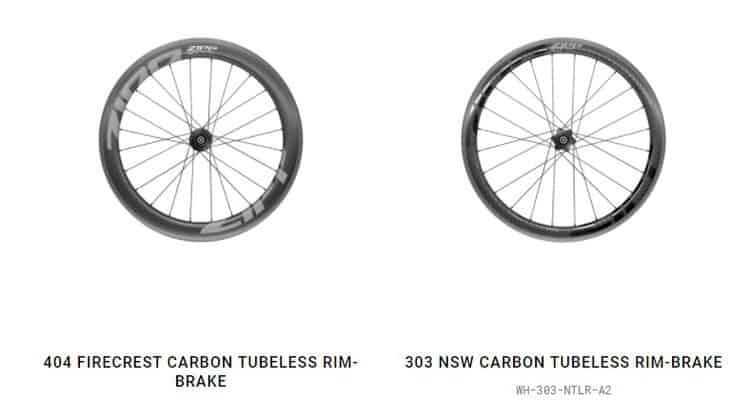
Zipp has been at the forefront of innovation since they began producing wheels in 1988 with the single focus of giving athletes an aerodynamic edge on race day. Zipp engineers have pushed the envelope of aerodynamic development over generations to offer a family of wheels designed to suit almost any type of riding that requires going fast as efficiently as possible.
The modern Zipp wheel includes improvements to nearly every critical parameter including aerodynamic efficiency, ride comfort, impact resistance, and durability.
Wheelbuilder has more experience building Zipp wheels than anyone outside the Zipp factory. As a factory authorized service center with over 20 years and thousands of Zipp builds in our knowledge base, Wheelbuilder is uniquely qualified to handcraft a custom Zipp wheel for almost any application.
Zipp Rim Brake Wheel Specs to Keep in Mind
- Optimized flange geometry and spoke hole attachment pattern with Sapim CX Sprint spokes to optimize torsional and lateral stiffness and robustness.
- Includes newly designed quick-release skewers with a wider more ergonomic handle to provide more leverage for opening and closing. When closed, the lever contours neatly with the frame.
- New robust hub platform with distinctive graphics.
- For those looking for a wider gear range, or tackling especially extreme terrain, a XD driver body for 177 is sold separately and easily installed to allow for more cassette options including a 10-42. The hubset is designed to swap driver bodies without re-dishing the wheel.
Zipp’s Carbon Clincher technology preserves the aerodynamic advantages of the 303 Firecrest’s tubular brother, while adding the convenience of a clincher tire. And at just 1,645g, it’s light enough to climb up the steepest gradients with ease as a go-to all-around wheelset.
The Firecrest shaping optimizes the aerodynamic profile of both the front half and the back half of the wheel.
In addition, Firecrest moves the center of pressure of the wheel backwards, giving the 45 mm-deep rim the crosswind stability of a box-section rim. At the same time, the 26.4 mm-wide brake track (at center) allows the clincher tire to take on a wider, more stable shape without compromising rolling resistance. It’s faster, simpler, and more stable.
The new wheels retain all the small details that make Zipp wheels what they are. Exposed spoke nipples sit in the aerodynamic shadow of the rims, keeping serviceability simple without compromising speed.
